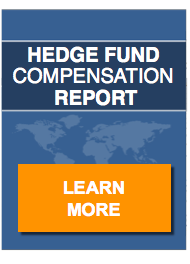An earlier article on this site explained how you can use databases for marketing your hedge fund to investors who might be interested in your investment strategy. But capital introduction is a two-way street, so it’s just as important that you make it easy for investors to find you.
There are two kinds of hedge fund databases: those to market a hedge fund to investors and raising capital, and those for investors conducting hedge fund research. Having already looked at the former, let’s look at the latter.
The most important thing to realize is what’s meant by “hedge fund research”. In theory, this could be for vendors to the hedge fund industry looking for sales leads for administration or infrastructure or what-have-you. It could also be a tool for hedge fund managers to keep tabs on each other. But that’s not really what these are for. They’re mainly tools for accredited investors to compile their portfolios.
“A good-performing fund that we see typically receives between 10 and 25 inquiries in a given year via all databases combined,” says Douglas Carpenter, partner in Long Island-based hedge fund advisor and administrator Strategic Asset Management. “While this seems low, they are usually high-quality leads and we see about 30% close with an average investment somewhere between $100K and $500K.”
Carpenter’s firm offers a service that lists hedge funds on databases, although this is something that entrepreneurs starting a hedge fund could do themselves at first. At the other end of the line, some institutions, particularly family offices, assemble their own databases, but this isn’t the general rule. Most investors prefer the wall of anonymity between themselves and the funds they’re looking at, at least while their still making their first cuts.
“There are two major uses for a hedge fund database,” says Joel Schwab, COO of New York-based Channel Capital Group, which operates HedgeFund.net. “One is sourcing investments that an investor may want to conduct due diligence on. The other is portfolio measurement — evaluating the performance of hedge funds in a portfolio.”
Portfolio measurement has to be taken in context, of course. Everything is relative, and you can’t assume that the reported rate of return is the actual yield. Schwab emphasizes the importance of customizing peer groups, adjusting for risk and taking all fees into account.
When selecting a hedge fund database, Schwab advises investors to focus on five characteristics:
- Comprehensiveness: How many funds, share classes, feeder funds, CTAs and managed futures appear? When was the last time they made a trade? Do they meet a particular investor’s assets-under-management thresholds?
- Timeliness: “If a manager does not submit data timely they can expect a stream of emails from the database requesting data,” Strategic’s Carpenter says. Schwab agrees that HedgeFund.net and its competitors are judged in part on how fast they can get monthly return data in from the hedge funds then push it out to subscribers.
- Classification: Is the database sortable and searchable according to investment market, style, geography or other elements of strategy? Can an investor easily trim away
- Customer service: Who answers the phone when a subscriber has a question or someone marketing a hedge fund has a clarification? Is it a receptionist, an intern, or somebody with CFA or CAIA chops?
- And, not least of all, accuracy: Other things being equal, the bigger the subscriber base, the better; if more people are looking at the data, then quality assurance is crowd-sourced and errors can be swiftly corrected.
Leading technology is, surprisingly, not a major selling point. Providers tout simplicity rather than bedazzlement. Some database providers market their own hedge fund database as a Microsoft Excel file attached to an email. Access from handheld devices remains an afterthought, at least for the time being.
But just as you had to move beyond Excel when you were starting a hedge fund, it may be only a matter of time before investors demand more from hedge fund databases as they endeavor to find you.


